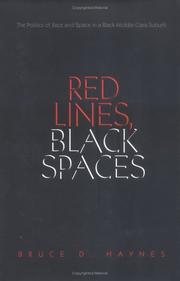| Listing 1 - 10 of 24 | << page >> |
Sort by
|

ISBN: 9780195189872 0195189876 0199864217 0198040946 1429486171 9786611162788 1281162787 Year: 2007 Publisher: Oxford: Oxford university press,
Abstract | Keywords | Export | Availability | Bookmark
 Loading...
Loading...Choose an application
- Reference Manager
- EndNote
- RefWorks (Direct export to RefWorks)
Counter Part history, part explanation of early music, this book also plays devil's advocate, criticizing current practices and urging experimentation. Haynes, a veteran of the movement, describes a vision of the future that involves improvisation, rhetorical expression, and composition. Written for musicians and non-musicians alike.
Performance practice (Music) --- Music --- History --- Interpretation (Phrasing, dynamics, etc.) --- Philosophy and aesthetics. --- History. --- Philosophy and aesthetics --- 78.57 --- uitvoeringspraktijk --- muziek --- muziekgeschiedenis --- Theatrical science --- Performance practice (Music) - History --- Music - Interpretation (Phrasing, dynamics, etc.) - Philosophy and aesthetics. --- Muziekgeschiedenis --- Uitvoeringspraktijk --- Interpretatie --- Geschiedenis --- Esthetica

ISBN: 0810841851 Year: 2002 Publisher: Lanham, Md The Scarecrow Press, Inc.
Abstract | Keywords | Export | Availability | Bookmark
 Loading...
Loading...Choose an application
- Reference Manager
- EndNote
- RefWorks (Direct export to RefWorks)
Musical pitch. --- Musical temperament. --- Diapason --- Tempérament (Musique) --- Musical pitch --- Musical temperament --- Temperament, Musical --- Monochord --- Musical intervals and scales --- Tuning --- Pitch, Musical --- Music --- Acoustics and physics --- Tempérament (Musique) --- 78.62

ISBN: 9780810841857 Year: 2002 Publisher: Lanham, Md The Scarecrow Press
Abstract | Keywords | Export | Availability | Bookmark
 Loading...
Loading...Choose an application
- Reference Manager
- EndNote
- RefWorks (Direct export to RefWorks)
Stemmingen --- Akoestiek --- Stemvorken

ISBN: 0914913158 Year: 1992
Abstract | Keywords | Export | Availability | Bookmark
 Loading...
Loading...Choose an application
- Reference Manager
- EndNote
- RefWorks (Direct export to RefWorks)
921 --- Repertoria - catalogi (bezetting) --- 78.45.3 --- Hobo --- Bibliografieën
Book
Year: 1985 Publisher: Berkeley (California) Fallen Leaf Press
Abstract | Keywords | Export | Availability | Bookmark
 Loading...
Loading...Choose an application
- Reference Manager
- EndNote
- RefWorks (Direct export to RefWorks)

ISBN: 128172212X 9786611722128 0300129866 9780300129861 9780300084900 0300084900 9781281722126 Year: 2001 Publisher: New Haven : Yale University Press,
Abstract | Keywords | Export | Availability | Bookmark
 Loading...
Loading...Choose an application
- Reference Manager
- EndNote
- RefWorks (Direct export to RefWorks)
Runyon Heights, a community in Yonkers, New York, has been populated by middle-class African Americans for nearly a century. This book-the first history of a black middle-class community-tells the story of Runyon Heights, which sheds light on the process of black suburbanization and the ways in which residential development in the suburbs has been shaped by race and class. Relying on both interviews with residents and archival research, Bruce D. Haynes describes the progressive stages in the life of the community and its inhabitants and the factors that enabled it to form in the first place and to develop solidarity, identity and political consciousness. He shows how residents came to recognize common political interests within the community, how racial consciousness provided an axis for social solidarity as well as partial insulation from racial slights, and how the suburb afforded these middle-class residents a degree of physical and social distance from the ghetto. As Haynes explores the history of Runyon Heights, we learn the ways in which its black middle class dealt with the tensions between the political interests of race and the material interests of class.
African Americans --- Middle class --- Social classes --- Ethnic neighborhoods --- Neighborhoods --- Class distinction --- Classes, Social --- Rank --- Caste --- Estates (Social orders) --- Social status --- Class consciousness --- Classism --- Social stratification --- Bourgeoisie --- Commons (Social order) --- Middle classes --- Afro-Americans --- Black Americans --- Colored people (United States) --- Negroes --- Africans --- Ethnology --- Blacks --- History. --- Social conditions. --- Economic conditions. --- Social conditions --- Yonkers (N.Y.) --- Ĭonkers (N.Y.) --- Йонкерс (N.Y.) --- Race relations. --- Black people
Book
ISBN: 1479887927 1479811238 Year: 2018 Publisher: New York, NY : New York University Press,
Abstract | Keywords | Export | Availability | Bookmark
 Loading...
Loading...Choose an application
- Reference Manager
- EndNote
- RefWorks (Direct export to RefWorks)
Explores the full diversity of Black Jews, including bi-racial Jews of both matrilineal and patrilineal descent; adoptees; black converts to Judaism; and Black Hebrews and Israelites, who trace their Jewish roots to Africa and challenge the dominant western paradigm of Jews as white and of European descent. The book showcases the lives of Black Jews, demonstrating that racial ascription has been shaping Jewish selfhood for centuries. It reassesses the boundaries between race and ethnicity, offering insight into how ethnicity can be understood only in relation to racialization and the one-drop rule. Within this context, Black Jewish individuals strive to assert their dual identities and find acceptance within their communities. Putting to rest the notion that Jews are white and the Black Jews are therefore a contradiction, the volume argues that we cannot pigeonhole Black Hebrews and Israelites as exotic, militant, and nationalistic sects outside the boundaries of mainstream Jewish thought and community life. it spurs us to consider the significance of the growing population of self-identified Black Jews and its implications for the future of American Jewry.
Jews --- Ethnic relations. --- African American Jews. --- SOCIAL SCIENCE --- African American Jews --- Afro-American Jews --- Jews, African American --- Negro Jews --- Identity, Jewish --- Jewish identity --- Jewishness --- Jewish law --- Jewish nationalism --- Behavioral sciences --- Human sciences --- Sciences, Social --- Social science --- Social studies --- Civilization --- Inter-ethnic relations --- Interethnic relations --- Relations among ethnic groups --- Acculturation --- Assimilation (Sociology) --- Ethnic groups --- Ethnology --- Social problems --- Sociology --- Minorities --- Race relations --- Identity. --- Minority Studies. --- Discrimination & Race Relations. --- Ethnic Studies --- African American Studies. --- History. --- Ethnic identity --- Race identity --- Legal status, laws, etc. --- United States. --- United States --- ABŞ --- ABSh --- Ameerika Ühendriigid --- America (Republic) --- Amerika Birlăshmish Shtatlary --- Amerika Birlăşmi Ştatları --- Amerika Birlăşmiş Ştatları --- Amerika ka Kelenyalen Jamanaw --- Amerika Qūrama Shtattary --- Amerika Qŭshma Shtatlari --- Amerika Qushma Shtattary --- Amerika (Republic) --- Amerikai Egyesült Államok --- Amerikanʹ Veĭtʹsėndi︠a︡vks Shtattnė --- Amerikări Pĕrleshu̇llĕ Shtatsem --- Amerikas Forenede Stater --- Amerikayi Miatsʻyal Nahangner --- Ameriketako Estatu Batuak --- Amirika Carékat --- AQSh --- Ar. ha-B. --- Arhab --- Artsot ha-Berit --- Artzois Ha'bris --- Bí-kok --- Ē.P.A. --- EE.UU. --- Egyesült Államok --- ĒPA --- Estados Unidos --- Estados Unidos da América do Norte --- Estados Unidos de América --- Estaos Xuníos --- Estaos Xuníos d'América --- Estatos Unitos --- Estatos Unitos d'America --- Estats Units d'Amèrica --- Ètats-Unis d'Amèrica --- États-Unis d'Amérique --- Fareyniḳṭe Shṭaṭn --- Feriene Steaten --- Feriene Steaten fan Amearika --- Forente stater --- FS --- Hēnomenai Politeiai Amerikēs --- Hēnōmenes Politeies tēs Amerikēs --- Hiwsisayin Amerikayi Miatsʻeal Tērutʻiwnkʻ --- Istadus Unidus --- Jungtinės Amerikos valstybės --- Mei guo --- Mei-kuo --- Meiguo --- Mî-koet --- Miatsʻyal Nahangner --- Miguk --- Na Stàitean Aonaichte --- NSA --- S.U.A. --- SAD --- Saharat ʻAmērikā --- SASht --- Severo-Amerikanskie Shtaty --- Severo-Amerikanskie Soedinennye Shtaty --- Si︠e︡vero-Amerikanskīe Soedinennye Shtaty --- Sjedinjene Američke Države --- Soedinennye Shtaty Ameriki --- Soedinennye Shtaty Severnoĭ Ameriki --- Soedinennye Shtaty Si︠e︡vernoĭ Ameriki --- Spojené obce severoamerické --- Spojené staty americké --- SShA --- Stadoù-Unanet Amerika --- Stáit Aontaithe Mheiriceá --- Stany Zjednoczone --- Stati Uniti --- Stati Uniti d'America --- Stâts Unîts --- Stâts Unîts di Americhe --- Steatyn Unnaneysit --- Steatyn Unnaneysit America --- SUA (Stati Uniti d'America) --- Sŭedineni amerikanski shtati --- Sŭedinenite shtati --- Tetã peteĩ reko Amérikagua --- U.S. --- U.S.A. --- United States of America --- Unol Daleithiau --- Unol Daleithiau America --- Unuiĝintaj Ŝtatoj de Ameriko --- US --- USA --- Usono --- Vaeinigte Staatn --- Vaeinigte Staatn vo Amerika --- Vereinigte Staaten --- Vereinigte Staaten von Amerika --- Verenigde State van Amerika --- Verenigde Staten --- VS --- VSA --- Wááshindoon Bikéyah Ałhidadiidzooígíí --- Wilāyāt al-Muttaḥidah --- Wilāyāt al-Muttaḥidah al-Amirīkīyah --- Wilāyāt al-Muttaḥidah al-Amrīkīyah --- Yhdysvallat --- Yunaeted Stet --- Yunaeted Stet blong Amerika --- ZDA --- Združene države Amerike --- Zʹi︠e︡dnani Derz︠h︡avy Ameryky --- Zjadnośone staty Ameriki --- Zluchanyi︠a︡ Shtaty Ameryki --- Zlucheni Derz︠h︡avy --- ZSA --- Η.Π.Α. --- Ηνωμένες Πολιτείες της Αμερικής --- Америка (Republic) --- Американь Вейтьсэндявкс Штаттнэ --- Америкӑри Пӗрлешӳллӗ Штатсем --- САЩ --- Съединените щати --- Злучаныя Штаты Амерыкі --- ولايات المتحدة --- ولايات المتّحدة الأمريكيّة --- ولايات المتحدة الامريكية --- 미국 --- African-American Hebrew. --- Afro-American. --- Ashkenazi Jews. --- Beta Israel. --- Black Hebrew. --- Black Hebrews. --- Christianity. --- Conversos. --- Ethiopian Hebrews. --- Hutus and Tutsis. --- Israelite communities. --- Jewish diaspora. --- Jewish identity. --- Jewish intellectuals. --- Judaism. --- Orientalist thinking. --- Sephardic. --- US census. --- Whiteness. --- ancient Israelites. --- anti-Semitism. --- biracial Jews. --- black Jews. --- black converts. --- black-Jewish identities. --- black-Jewish relations. --- conversion. --- double consciousness. --- eastern European Jews. --- global Jewish narrative. --- kinship. --- political orientation. --- racial consciousness. --- racial performance. --- racial project. --- racial projects. --- racial taxonomies. --- racialization. --- racism. --- religious practice. --- situational passing. --- slavery. --- strategic essentialism. --- États-Unis --- É.-U. --- ÉU --- AB --- Amerikanʹ Veĭtʹsėndi͡avks Shtattn --- Saharat ʻAmērik --- Si͡evero-Amerikanskīe Soedinennye Shtaty --- Soedinennye Shtaty Si͡evernoĭ Ameriki --- Spojené obce severoamerick --- Spojené staty americk --- Stáit Aontaithe Mheirice --- SUA --- Wááshindoon Bikéyah Ałhidadiidzooígí --- Zʹi͡ednani Derz͡havy Ameryky --- Zluchanyi͡a Shtaty Ameryki --- Zlucheni Derz͡havy --- Amerikanʹ Veĭtʹsėndi͡avks Shtattnė
Book
ISBN: 9780300100532 Year: 2004 Publisher: New Haven, London : Yale University Press,
Abstract | Keywords | Export | Availability | Bookmark
 Loading...
Loading...Choose an application
- Reference Manager
- EndNote
- RefWorks (Direct export to RefWorks)
Book
ISBN: 0231543417 Year: 2017 Publisher: New York, NY : Columbia University Press,
Abstract | Keywords | Export | Availability | Bookmark
 Loading...
Loading...Choose an application
- Reference Manager
- EndNote
- RefWorks (Direct export to RefWorks)
Down the Up Staircase tells the story of one Harlem family across three generations, connecting its journey to the historical and social forces that transformed Harlem over the past century. Bruce D. Haynes and Syma Solovitch capture the tides of change that pushed blacks forward through the twentieth century-the Great Migration, the Harlem Renaissance, the early civil rights victories, the Black Power and Black Arts movements-as well as the many forces that ravaged black communities, including Haynes's own. As an authority on race and urban communities, Haynes brings unique sociological insights to the American mobility saga and the tenuous nature of status and success among the black middle class.In many ways, Haynes's family defied the odds. All four great-grandparents on his father's side owned land in the South as early as 1880. His grandfather, George Edmund Haynes, was the founder of the National Urban League and a protégé of eminent black sociologist W. E. B. Du Bois; his grandmother, Elizabeth Ross Haynes, was a noted children's author of the Harlem Renaissance and a prominent social scientist. Yet these early advances and gains provided little anchor to the succeeding generations. This story is told against the backdrop of a crumbling three-story brownstone in Sugar Hill that once hosted Harlem Renaissance elites and later became an embodiment of the family's rise and demise. Down the Up Staircase is a stirring portrait of this family, each generation walking a tightrope, one misstep from free fall.
African American families --- Middle class African Americans --- African Americans --- Social mobility --- Intergenerational relations --- Social conditions. --- History. --- Haynes, Bruce D., --- Haynes, George Edmund, --- Family. --- Harlem (New York, N.Y.) --- New York (N.Y.)
Book
ISBN: 9780231543415 0231543417 9780231181020 0231181027 Year: 2017 Publisher: New York, NY
Abstract | Keywords | Export | Availability | Bookmark
 Loading...
Loading...Choose an application
- Reference Manager
- EndNote
- RefWorks (Direct export to RefWorks)
| Listing 1 - 10 of 24 | << page >> |
Sort by
|

 Search
Search Feedback
Feedback About UniCat
About UniCat  Help
Help News
News